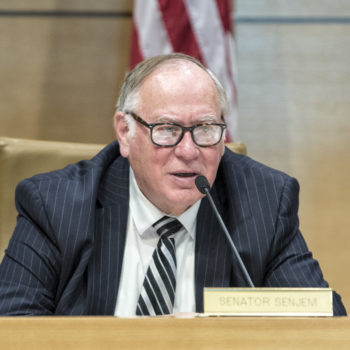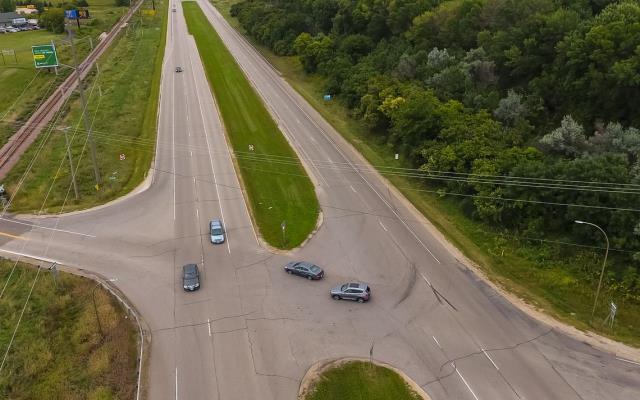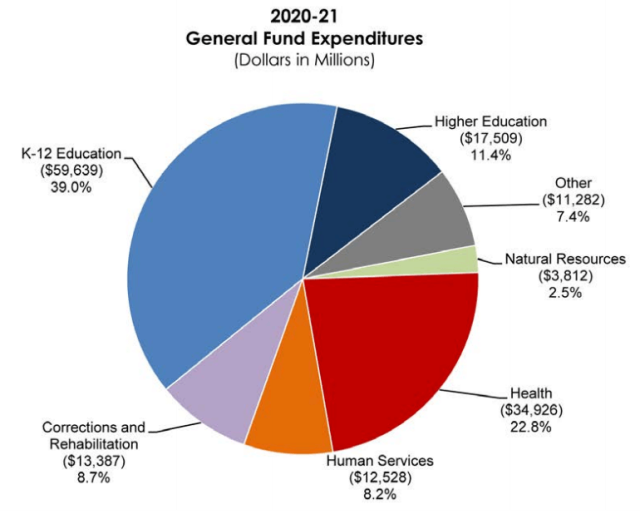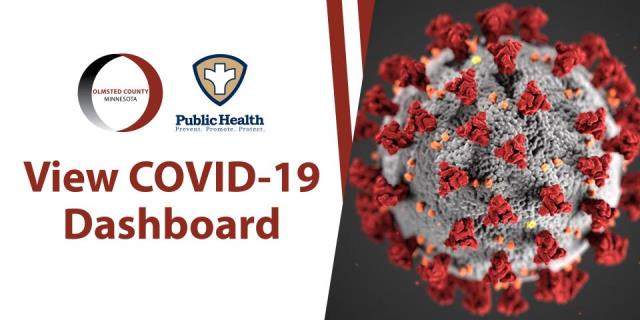| Dear Friends, Minnesota enacts a state budget for a two-year cycle (a biennium), beginning on July 1 of each odd-numbered year. This legislative session the main objective is to craft this new state operating budget. When constructing a budget both Senate and House committees shape omnibus budget bills. Omnibus bills are a way for lawmakers to bundle similar proposals together in one bill. Presently, the Senate and House continue to hear omnibus budget bills on the floor. Both legislative bodies continue to spend long days and nights on the floors debating and passing budget bills. This gives all members of the Senate an opportunity to introduce amendments to these budget bills and all members have an opportunity to vote for or against the many amendments offered.  The following omnibus budget bills were discussed, passed, and are headed to Conference Committee where five people from both the Senate and the House bring the bills each body has passed to work out differences to create one cohesive bill. -Education K-12 Education -Environment and Natural Resources -Housing -Legacy Finance -Transportation -Commerce and Energy -Agriculture -Higher Education -Housing -Jobs and Economic Growth and Labor -Judiciary and Public Safety -State Government -Veterans Later this week the Health and Human Services and Taxes Omnibus bills will be discussed and debated on the Senate floor. Below is a brief summary of the Education and Transportation Omnibus bills passed by the Senate last week. Multi-Billion Dollar Transportation Bill The Minnesota Senate approved a comprehensive, bipartisan transportation budget that invests billions over the next two years in the state’s transportation infrastructure without a gas tax, mileage tax, sales tax, or license tab fee increase. The transportation budget provides $3.03 billion for state highway construction, development, and maintenance; $2.25 billion for County and Municipal State Aid Roads; and $334 million for highways specifically identified as important to commerce. The bill also provides $60 million for local and small bridges and $18.5 million for city and county roads. The bill also provides unprecedented levels of new, ongoing funding for small city and township roads. We should be constantly looking for ways to improve the safety and functionality of our infrastructure. This bipartisan legislation will let us to continue to fund our infrastructure, while allowing us to study new and better ways to improve what we currently have without a gas or mileage tax. The transportation budget improves convenience and ease stress for Minnesota drivers by allowing Minnesotans to purchase their license tabs and replacement license plates from fully-automated kiosks; by allowing third-party locations to offer road tests in order to clear out the backlog of students waiting to take their driver’s test; by permitting driver’s education students to take the classroom portion of their instruction online; and by creating a pilot program where Minnesotans could receive their standard driver’s license card the same day they renew their license or pass their driving test.  (Courtesy Post Bulletin) (Courtesy Post Bulletin)A number of other key provisions are included in the legislation: -$11.06 million to Olmsted County for Trunk Hwy. 14 and County Road 104 interchange. -$35 million to protect children at school bus stops by equipping every school bus in Minnesota with cameras to catch stop-arm violators. -$1 million dollars for the successful Safe Routes to Schools program, which aims to improve student safety and reduce traffic near schools. Protects statewide taxpayers by shifting the responsibility for funding current and future light rail development to counties instead of the state of Minnesota. -$267 million over the next two years for the state patrol, including $9.1 million to hire 25 new troopers and $6.3 million to meet their request for body cameras. -Shifts essential programs, such as emergency 9-1-1 radio communications, to the general fund. Education K-12 Budget Bill Adds $781 Million of New Money The Minnesota Senate approved a bipartisan bill that provides $781 million of new money and transforms the way the state delivers education. The legislation that passed off the senate floor emphasizes approaches with a track record of improving student performance in other states, like student literacy, mental health, and empowering parents. Schools will receive a significant boost in funding of nearly $3.5 billion from combined state and federal resources. Total state education aid will reach a record of $20.6 billion for the upcoming two school years under the Republican proposal — approximately 42% of the state’s general fund budget. When combined with local levies, schools will have more than $29 billion in revenue for the next budget cycle, far more money than ever before.  Prioritizing education means prioritizing the future of our state. This legislation is a well-balanced approach for trying to help out families across the state and give parents more of a choice on where their kids go to school. For many minority students their current school is not the right school Minnesota has one of the worst achievement gaps in the country while spending even 40% of its operating budget on education. This is very serious. We must find a better way. The new item in the bill is the creation of Education Savings Accounts (ESAs) which will empower parents with more flexibility and control over their child’s education. With ESAs, the state funds kids, not systems: If a parent chooses to withdraw their child from public school, the state would deposit that child’s share of state education assistance into a restricted, government-authorized savings account the parent could use for approved education-related expenses, including tuition and fees at a different school, online learning, instructional material, and more. ESAs empower parents and have vastly improved outcomes for kids. A March 2021 poll conducted by Morning Consult found 69 percent of all Minnesotans and 75 percent of all parents’ nationwide support ESAs. According to a 2021 survey from Beck Research, 74% of African Americans, 71% of Latinos, and 65% of all voters back the concept of school choice. The education bill prioritizes the bipartisan issue of mental health support, including a $1.5 million grant to the organization Live More, Screen Less to address the effects of social media and screen time overuse and misuse on student mental health and $3.8 million for youth counseling at the elementary school level. The bill also includes funding for suicide prevention training for teachers and allows schools to use school safety funding for student mental health. The bill also provides $60 million in one-time Minnesota Classroom Support Aid to allow our schools to recover from the classroom shut-down and to fully return to in-person learning. The legislation also empowers local schools. It expands and clarifies schools’ ability to offer for-credit instruction during whatever hours work best for students. The bill expands the definition of student instruction to include all learning opportunities, such as blended learning, distance learning, project-based learning, work-based learning, service learning, supervised internships, and in-person learning in a school building. The bill allows local school districts to offer a full distance learning option to their students at any time; allows school districts to approve “flexible learning year” schedules; and grants local school boards the authority to exercise these freedoms without first needing approval from a state bureaucracy.  Community Vaccination Clinics Minnesota’s COVID-19 Community Vaccination Program brings easy, free, and safe vaccine opportunities to familiar community settings around the state. The Mayo Civic Center is proud to support our community as a Community Vaccination Clinic. For more information on the vaccination clinic. Click To read more. To find locations throughout the state click here. Find me on Facebook! Make sure to follow my new legislative page on Facebook! You can find video updates, news from the legislature, photos, and more on my page. Click here. |
